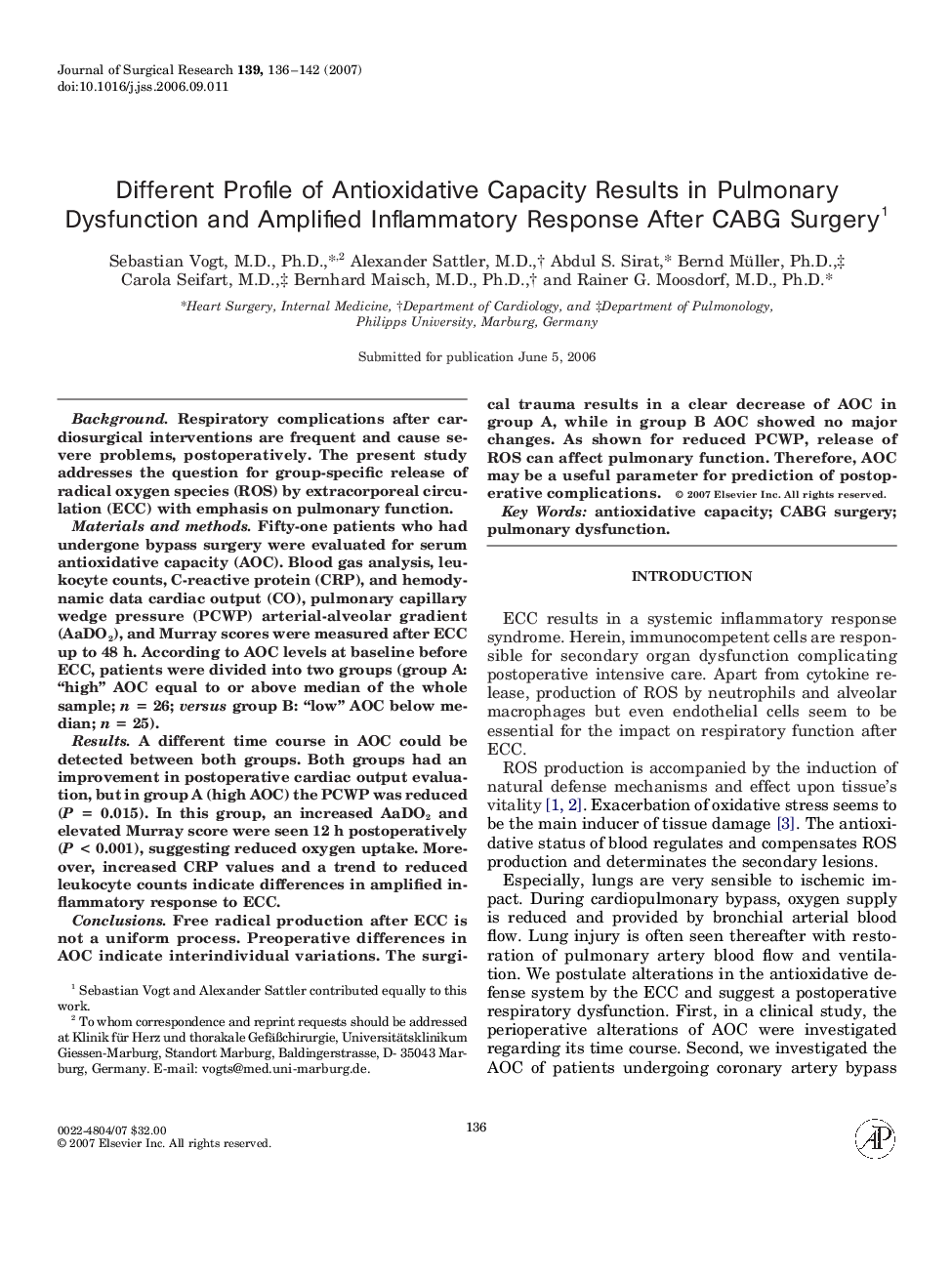| Article ID | Journal | Published Year | Pages | File Type |
|---|---|---|---|---|
| 4305001 | Journal of Surgical Research | 2007 | 7 Pages |
BackgroundRespiratory complications after cardiosurgical interventions are frequent and cause severe problems, postoperatively. The present study addresses the question for group-specific release of radical oxygen species (ROS) by extracorporeal circulation (ECC) with emphasis on pulmonary function.Materials and methodsFifty-one patients who had undergone bypass surgery were evaluated for serum antioxidative capacity (AOC). Blood gas analysis, leukocyte counts, C-reactive protein (CRP), and hemodynamic data cardiac output (CO), pulmonary capillary wedge pressure (PCWP) arterial-alveolar gradient (AaDO2), and Murray scores were measured after ECC up to 48 h. According to AOC levels at baseline before ECC, patients were divided into two groups (group A: “high” AOC equal to or above median of the whole sample; n = 26; versus group B: “low” AOC below median; n = 25).ResultsA different time course in AOC could be detected between both groups. Both groups had an improvement in postoperative cardiac output evaluation, but in group A (high AOC) the PCWP was reduced (P = 0.015). In this group, an increased AaDO2 and elevated Murray score were seen 12 h postoperatively (P < 0.001), suggesting reduced oxygen uptake. Moreover, increased CRP values and a trend to reduced leukocyte counts indicate differences in amplified inflammatory response to ECC.ConclusionsFree radical production after ECC is not a uniform process. Preoperative differences in AOC indicate interindividual variations. The surgical trauma results in a clear decrease of AOC in group A, while in group B AOC showed no major changes. As shown for reduced PCWP, release of ROS can affect pulmonary function. Therefore, AOC may be a useful parameter for prediction of postoperative complications.
